
The Sagrada Familia, an iconic basilica in the heart of Barcelona, stands as a testament to the genius of architect Antoni Gaudí. This extraordinary structure, characterized by its intricate facades and towering spires, draws millions of visitors each year, eager to witness its stunning beauty and unique architectural style.
Known as The Sagrada Familia: 🏰🇪🇸 Gaudí's Masterpiece in Barcelona, this monumental project has been under construction since 1882 and is celebrated for its blend of Gothic and Art Nouveau elements. With a vision that transcends time, Gaudí’s masterpiece continues to inspire awe and admiration, making it a symbol of both the city and the artist himself.
The Architectural Genius of Gaudí: An Overview of the Sagrada Familia
Antoni Gaudí's architectural genius is vividly displayed in The Sagrada Familia, where every detail serves both aesthetic and functional purposes. The basilica features an innovative use of geometrical forms, organic shapes, and natural light that create a harmonious atmosphere. Gaudí believed that architecture should reflect the beauty of nature, and this philosophy is evident in elements such as:
- Organic columns resembling tree trunks
- Intricate stained glass windows casting colorful light
- Facades depicting biblical stories through sculptural reliefs
One of the most remarkable aspects of Gaudí's work is his approach to structural engineering. By employing a technique known as catenary arches, he ensured that the basilica's weight is distributed evenly, allowing for higher and more complex structures. This method not only enhances the visual impact but also provides remarkable stability, illustrating Gaudí's foresight in marrying form with function.
The Sagrada Familia also reflects Gaudí’s deep religious devotion, evident in its design and symbolism. Each of the basilica's towers represents a different figure in Christianity, contributing to a narrative that guides visitors through a spiritual journey. The overall layout mirrors the traditional Latin cross, emphasizing the basilica's purpose as a house of worship.
As construction continues into the 21st century, The Sagrada Familia remains a living testament to Gaudí's vision and creativity. This ongoing project has become a symbol of perseverance, with artisans and architects dedicated to completing the masterpiece as he envisioned. The blend of traditional craftsmanship and modern technology used in the construction process honors Gaudí’s legacy while pushing architectural boundaries even further.
Exploring the Symbolism Behind the Sagrada Familia's Design
Exploring the symbolism behind the design of The Sagrada Familia reveals a rich tapestry of meanings woven into its architecture. Gaudí intricately incorporated elements that reflect his profound religious beliefs and connection to nature. Among these symbols, the use of light plays a critical role, representing divine presence and spiritual enlightenment. This intentional use of natural illumination not only enhances the beauty of the interior but also serves as a reminder of the ethereal connection between the earthly and the divine.
Each of the basilica's towers is laden with symbolism, representing significant biblical figures. For example, the central tower, dedicated to Jesus, stands taller than the others, symbolizing his supremacy. The other towers represent:
- Mary, the mother of Jesus
- The apostles, each contributing to the New Testament
- Various saints, emphasizing the church's role in the Christian faith
The layout of the Sagrada Familia is also steeped in symbolism, designed in the shape of a Latin cross, which is a traditional Christian representation. This layout not only guides the spiritual journey of its visitors but also signifies the sacred nature of the space. Furthermore, the intricate facades, adorned with biblical scenes, invite contemplation and storytelling, transforming the basilica into a living scripture that communicates the Christian narrative through art.
In addition to religious symbolism, Gaudí’s inspiration from nature is evident in structural elements resembling trees and organic forms. This approach emphasizes his belief that architecture should harmonize with its surroundings, reinforcing the idea that nature is a manifestation of the divine. As visitors explore the Sagrada Familia, they embark not only on a physical journey but also on a spiritual expedition that celebrates the unity of faith, nature, and art.
Visiting the Sagrada Familia: Tips for Your Barcelona Trip
Visiting the Sagrada Familia is a highlight of any trip to Barcelona. To make the most of your experience, consider purchasing your tickets online in advance. This will not only save you time but also help you avoid long queues that can lead to significant delays, especially during peak tourist seasons.
When planning your visit, it's essential to allocate enough time to fully appreciate the intricate details of Gaudí's masterpiece. Aim for at least 2 to 3 hours to explore both the interior and exterior. Additionally, consider visiting during off-peak hours, such as early morning or late afternoon, to enjoy a quieter experience.
Here are some tips to enhance your visit:
- Audio Guides: Rent an audio guide to gain deeper insights into the basilica's history and architectural significance.
- Dress Code: As a place of worship, dress modestly to show respect. This includes covering shoulders and knees.
- Photography: Use your camera, but be mindful of not disturbing other visitors while capturing the stunning beauty.
For those interested in a more structured experience, consider booking a guided tour. This provides expert knowledge and ensures you don't miss any of the remarkable details that make the Sagrada Familia truly unique. Many tours also include access to areas not open to the public, such as the towers, offering a breathtaking view of Barcelona.
The History and Construction Timeline of the Sagrada Familia
The history of The Sagrada Familia began in 1882 when the construction was first initiated under architect Francisco de Paula del Villar. However, it wasn't until 1883 that Antoni Gaudí took over the project, propelling it into a new era of artistic innovation. His vision was to create a grand basilica that melded Gothic and Art Nouveau styles, and his unique approach would redefine the architectural landscape of Barcelona.
Throughout its construction timeline, the basilica has faced numerous challenges, including funding shortages and the impact of the Spanish Civil War, which paused the project for several years. Despite these obstacles, dedicated craftsmen and architects have continued to work on the basilica. Key milestones in the construction include:
- 1914: The completion of the Nativity Facade, showcasing Gaudí's intricate designs.
- 1936: Construction halted due to the Spanish Civil War, resulting in significant damage to Gaudí's models and plans.
- 2010: The completion of the first tower dedicated to Jesus, signaling significant progress toward Gaudí's vision.
As of 2023, the Sagrada Familia is still under construction, with an expected completion date set for 2026, marking the centenary of Gaudí's death. This ongoing effort not only reflects the artist's original intentions but also incorporates modern technologies and materials, highlighting the commitment to authenticity in Gaudí's architectural philosophy. The project remains a collaborative endeavor, uniting artisans, architects, and engineers who are passionate about bringing this masterpiece to fruition.
The Sagrada Familia is not only a landmark in Barcelona but also a symbol of the city's resilience and dedication to cultural heritage. As the basilica evolves, it continues to attract millions of visitors each year, each drawn to its majestic beauty and the story behind its creation. The journey of the Sagrada Familia serves as a remarkable reminder of how vision and perseverance can shape the future of architecture.
The Impact of Gaudí's Vision on Modern Architecture
Antoni Gaudí's vision has had a profound impact on modern architecture, inspiring generations of architects to explore innovative forms and materials. By integrating nature into his designs, Gaudí challenged conventional architectural norms, emphasizing organic shapes and fluidity over traditional rigidity. This approach paved the way for movements such as Biomimicry, where buildings mimic natural environments, enhancing sustainability and aesthetics in contemporary architecture.
Furthermore, Gaudí's use of advanced structural techniques, such as the catenary arch and hyperboloid structures, has influenced modern engineering practices. His focus on functionality and stability, coupled with artistic expression, encourages architects today to create buildings that are both visually striking and structurally sound. As a result, contemporary architecture increasingly embraces a blend of artistry and practicality, reflecting Gaudí's lasting legacy.
In addition to his innovative design principles, Gaudí's commitment to detail and craftsmanship has inspired a resurgence of artisanal techniques in modern construction. Architects are now more inclined to collaborate with skilled artisans to incorporate bespoke elements into their designs. This return to craftsmanship enhances the overall quality and uniqueness of buildings, reminiscent of Gaudí's meticulous approach to his masterpieces.
Overall, Gaudí's influence extends beyond the architectural realm; it invites a cultural shift towards sustainability, creativity, and holistic design. His visionary ideas encourage architects to consider not just the built environment but also its relationship with nature and the community, fostering an enduring dialogue about the role of architecture in enhancing urban life.
Understanding the Spiritual Significance of the Sagrada Familia
Understanding the spiritual significance of The Sagrada Familia goes beyond its breathtaking architecture; it embodies a profound quest for divine connection. Gaudí envisioned the basilica as a canvas for religious expression, where every detail serves to elevate the soul. The interplay of light within the structure symbolizes spiritual enlightenment, guiding visitors through a journey that resonates with their inner beliefs.
The design incorporates elements that reflect Gaudí's deep faith, evident in the rich symbolism found throughout the basilica. For instance, the towers are dedicated to key figures in Christianity, each representing a specific aspect of the faith. These include:
- Jesus Christ: Central tower signifying his supremacy.
- Mary: Representing the motherly aspect of faith.
- Saints: Each tower dedicated to various saints, reinforcing the church's role in spiritual guidance.
Moreover, the layout of The Sagrada Familia mirrors the traditional Latin cross, emphasizing its purpose as a sacred space. This thoughtful design invites contemplation, allowing visitors to connect with the spiritual narratives depicted in its facades. Each sculptural relief tells a part of the Christian story, transforming the basilica into a living testament of faith and artistry.
In essence, The Sagrada Familia serves as a spiritual sanctuary, where architecture, light, and nature converge to create a unique atmosphere for reflection and worship. As visitors walk through its hallowed halls, they embark on a transformative experience that celebrates the intertwined nature of faith, art, and the divine.
En este sentido, te invitamos a ver el siguiente video que explora en profundidad la obra maestra de Gaudí en Barcelona: La Sagrada Familia.

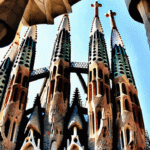 Sagrada Familia in Barcelona 🏰: Gaudí's UNESCO Basilica
Sagrada Familia in Barcelona 🏰: Gaudí's UNESCO Basilica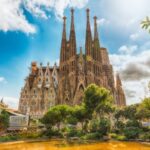 From the Majestic Sagrada Familia to the Exotic Barcelona Zoo: A Perfect Day of Adventure in Barcelona
From the Majestic Sagrada Familia to the Exotic Barcelona Zoo: A Perfect Day of Adventure in Barcelona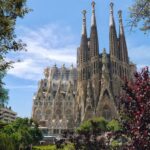 The Fascinating Facts about Barcelona's Iconic Landmark: La Sagrada Familia
The Fascinating Facts about Barcelona's Iconic Landmark: La Sagrada FamiliaIf you want to know other articles similar to The Sagrada Familia: 🏰🇪🇸 Gaudí's Masterpiece in Barcelona you can visit the category Sagrada Familia.
Leave a Reply

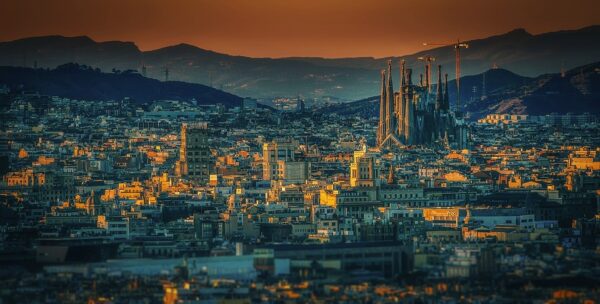
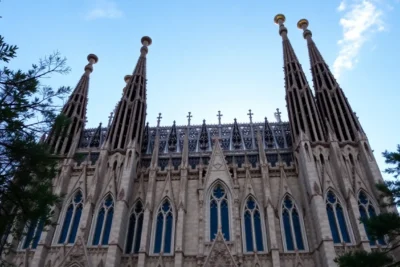
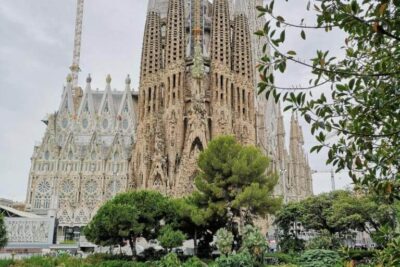
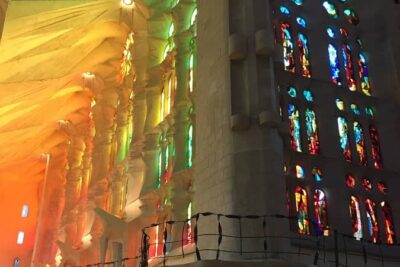
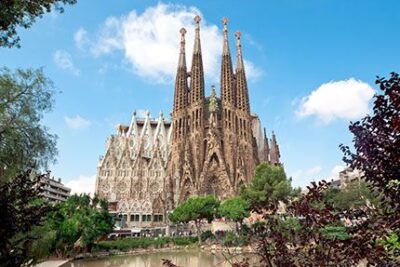
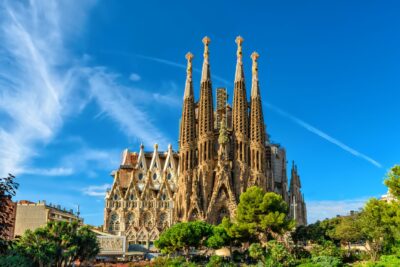
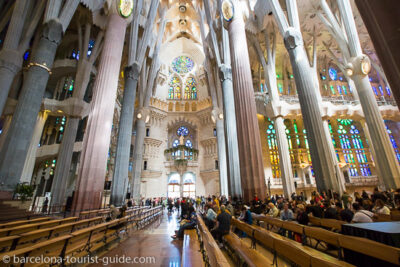
Read more!